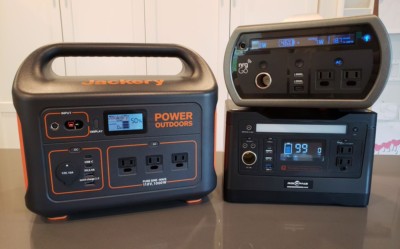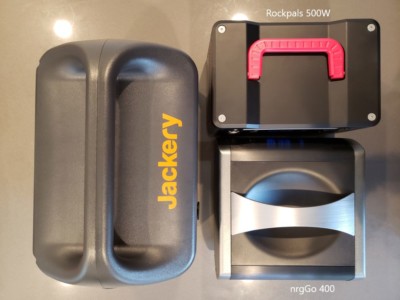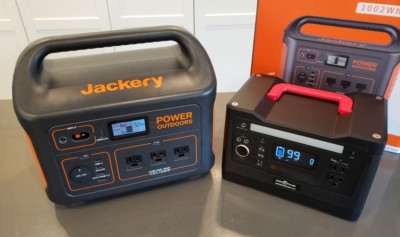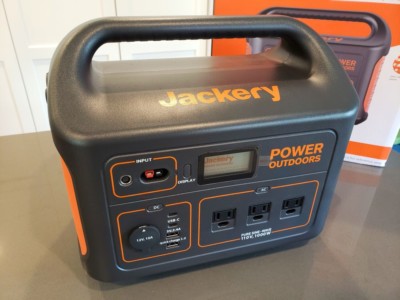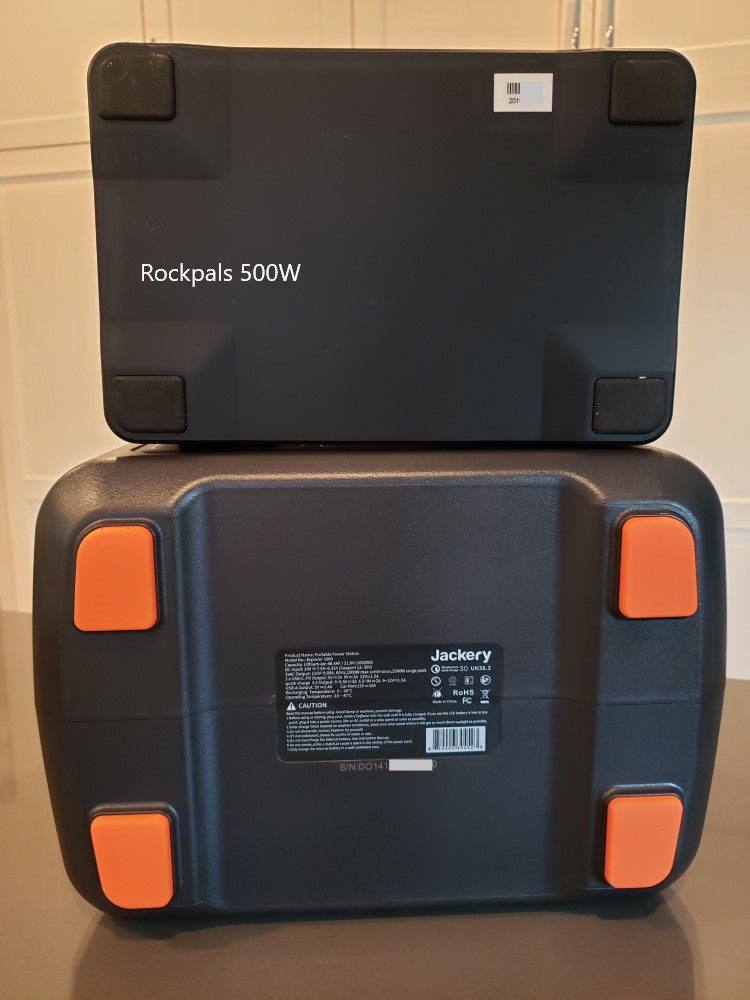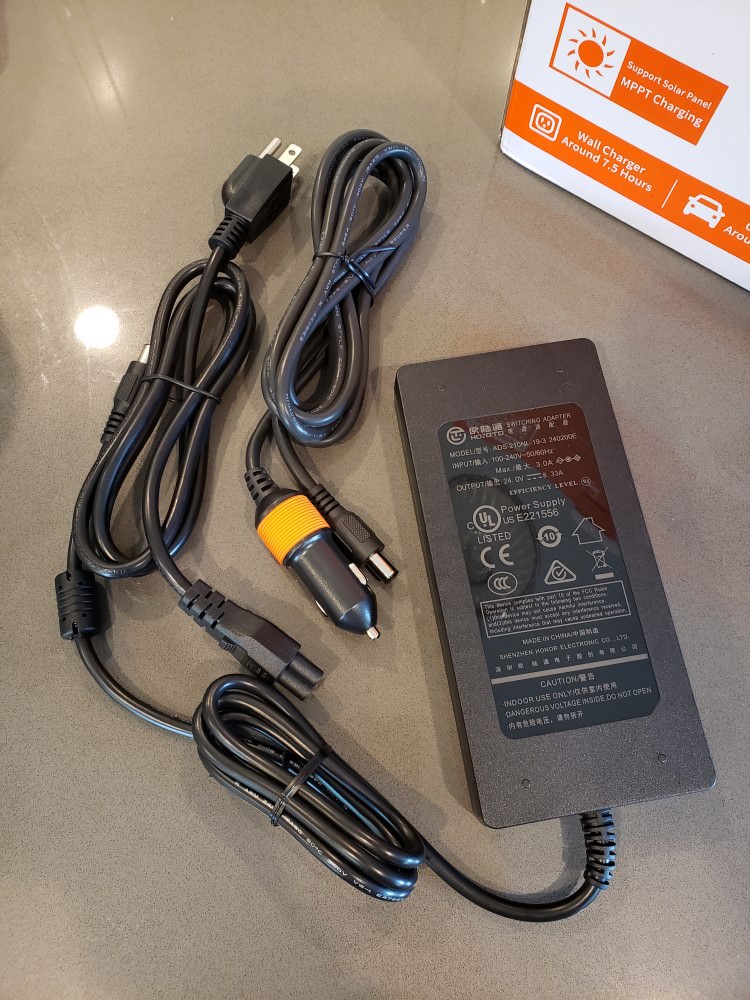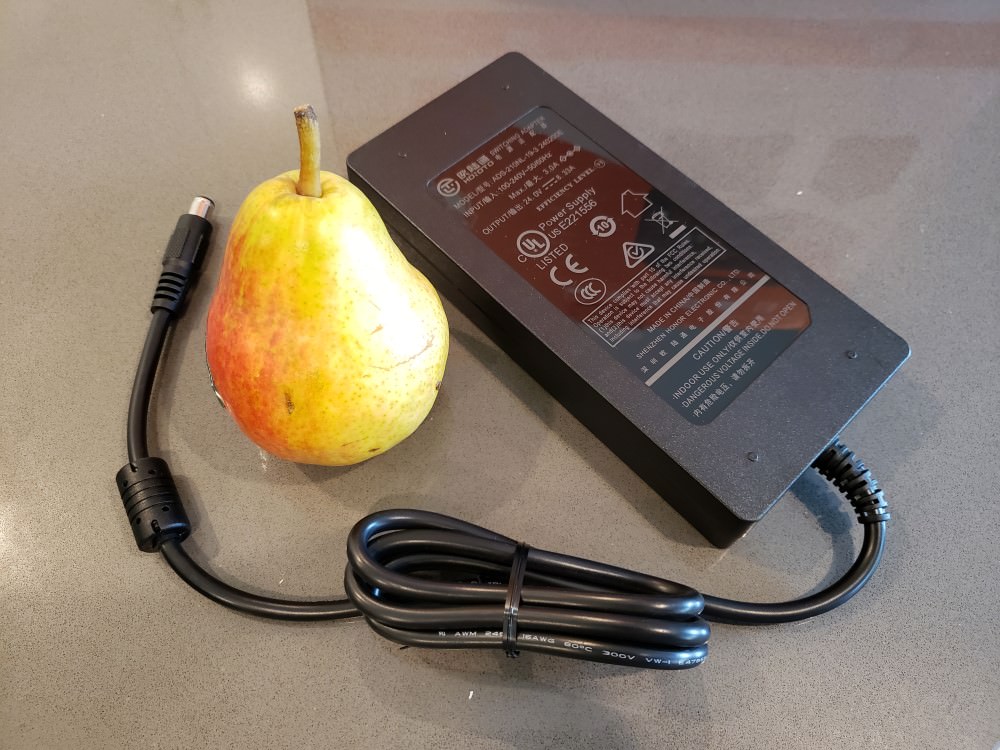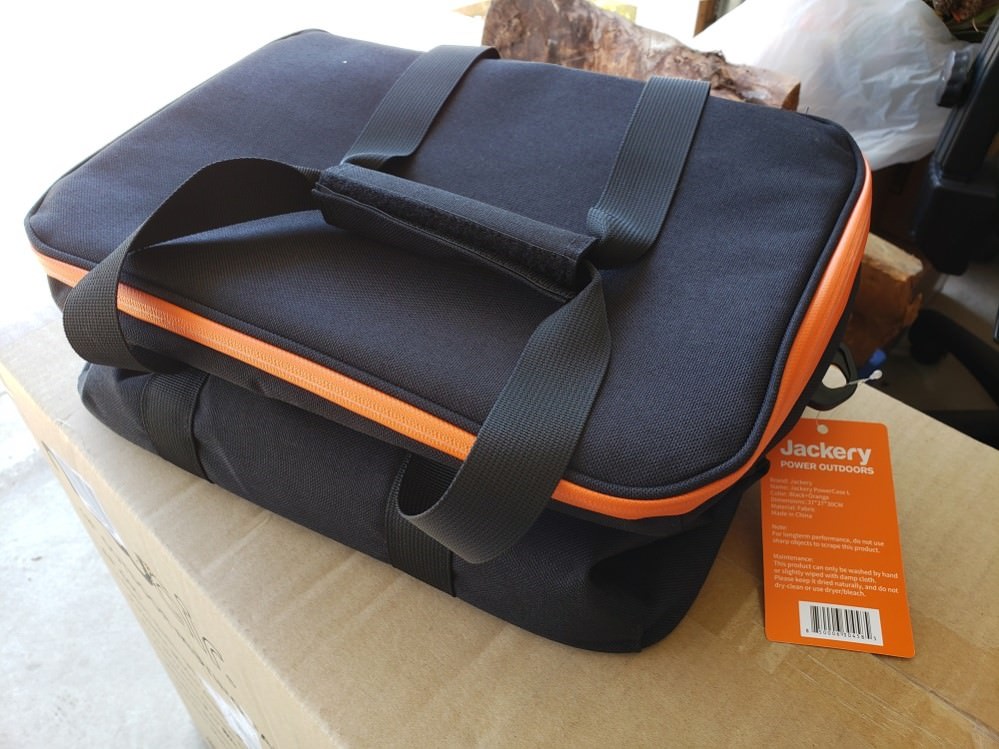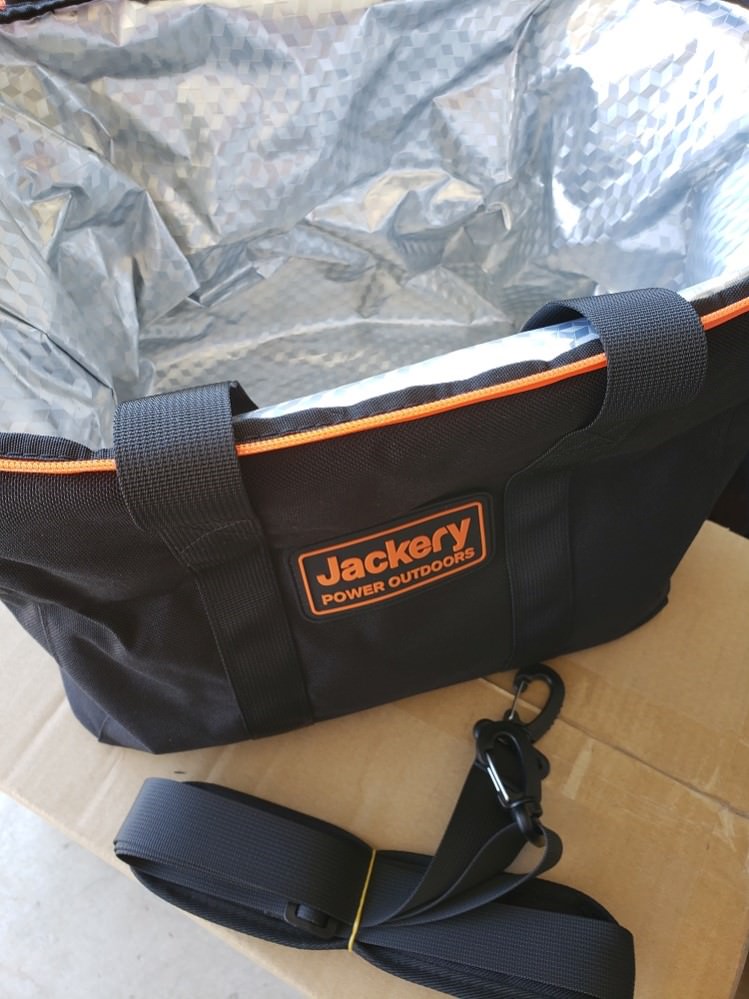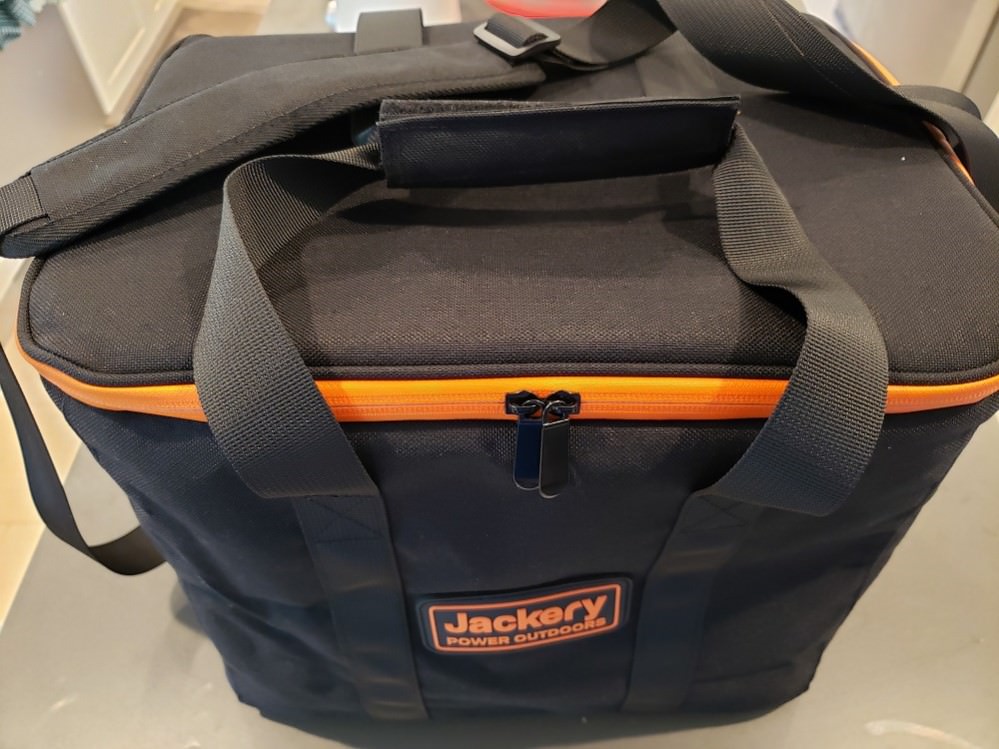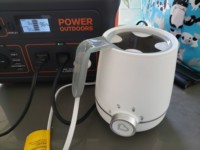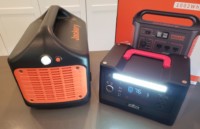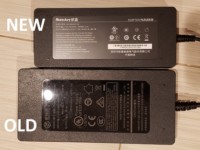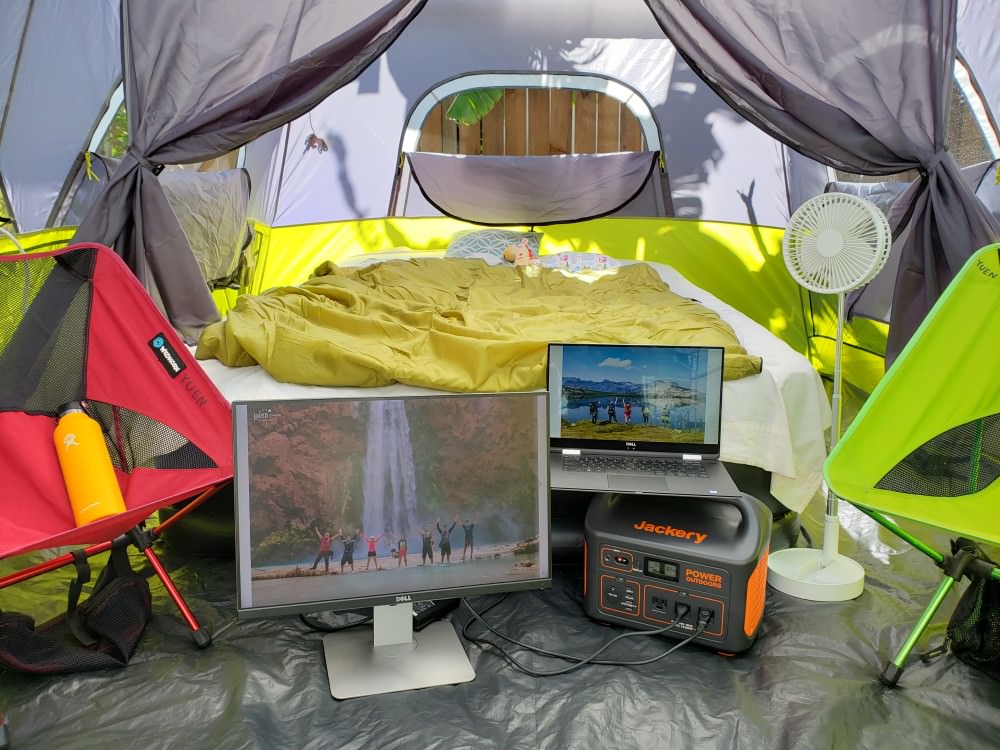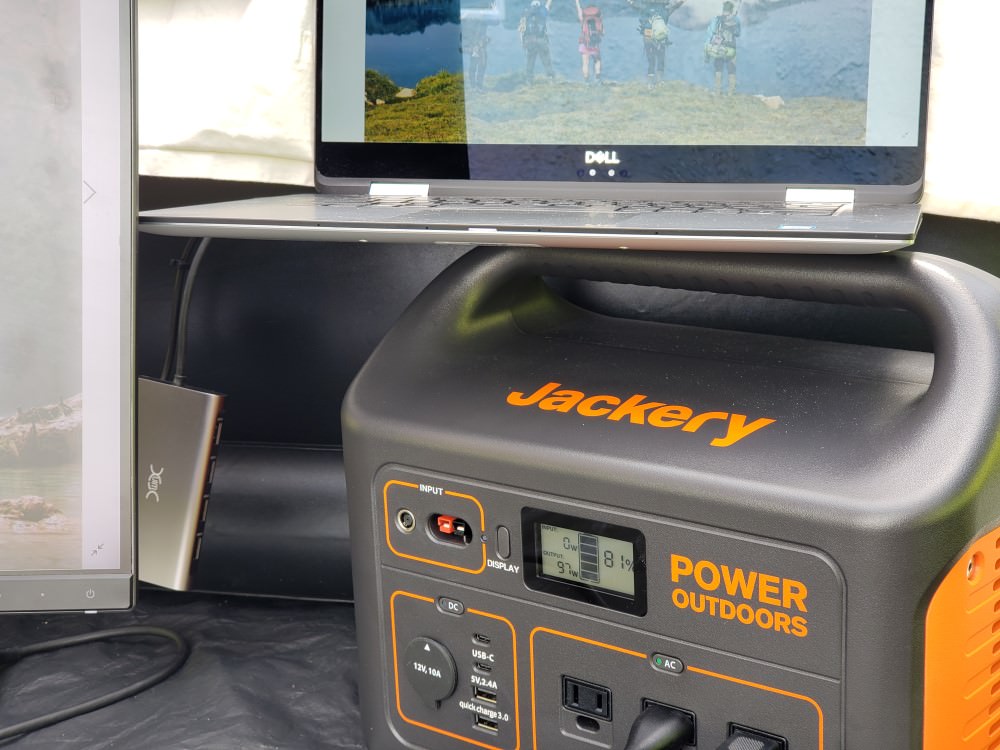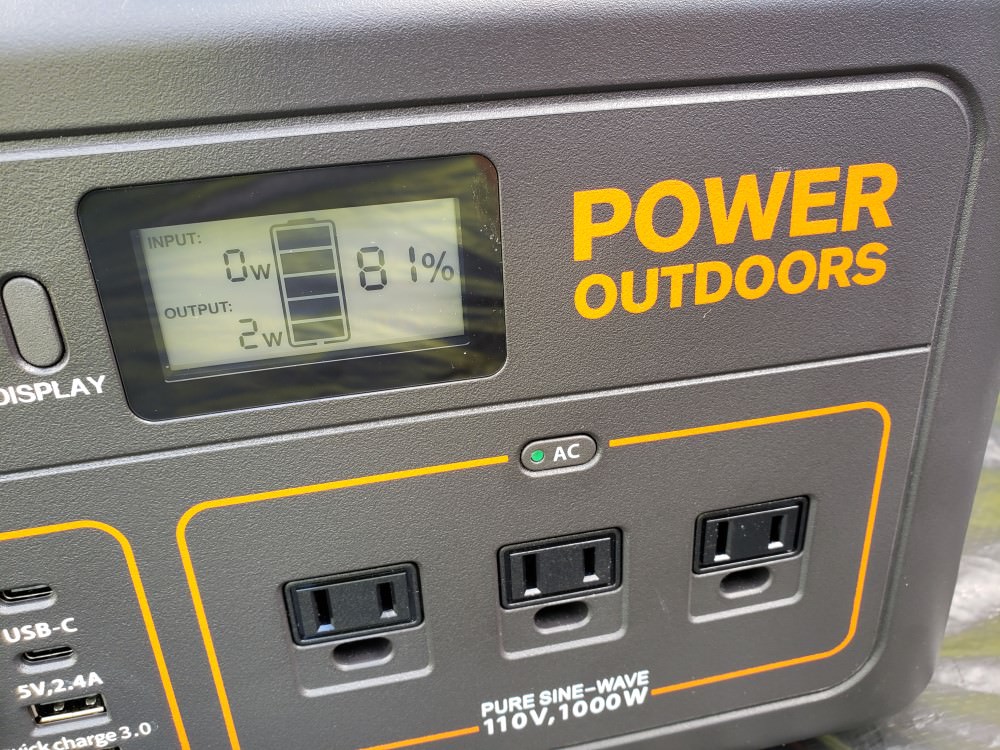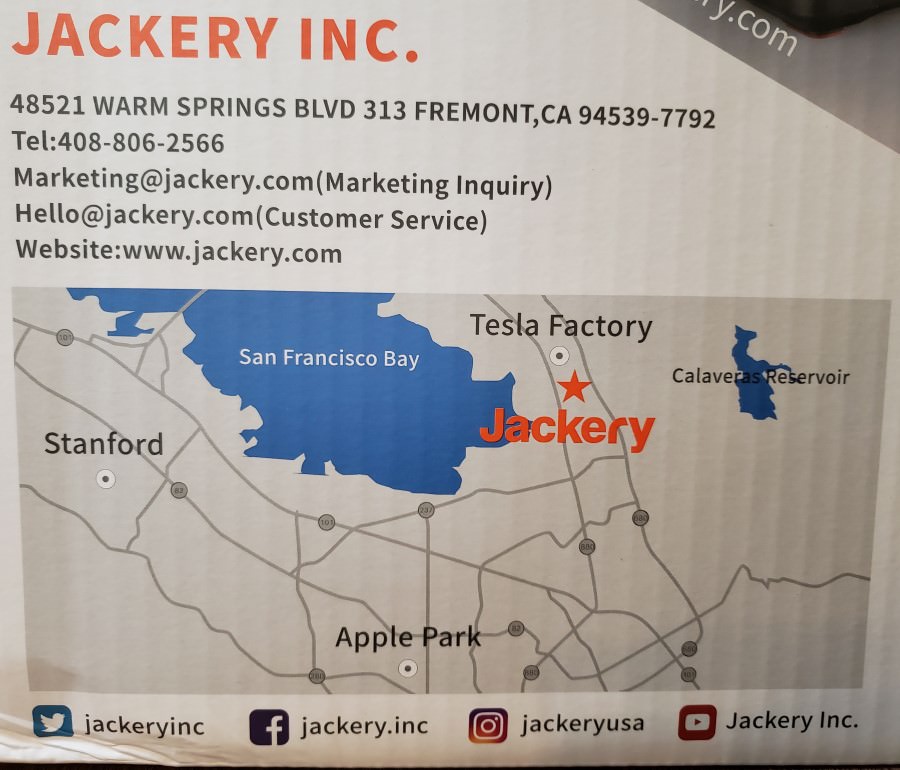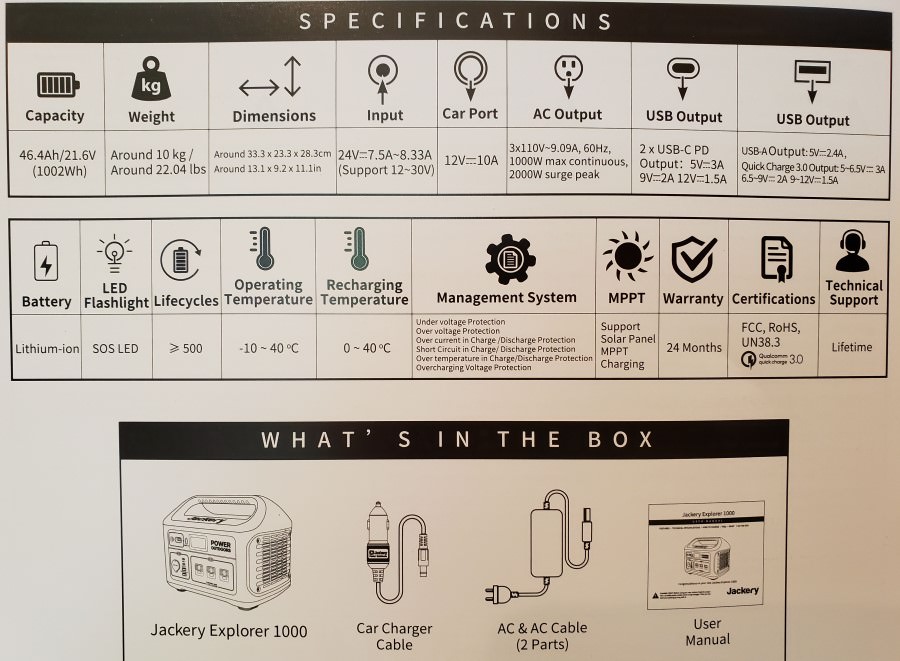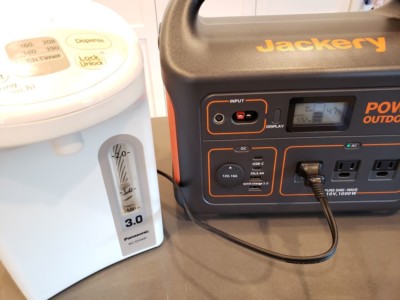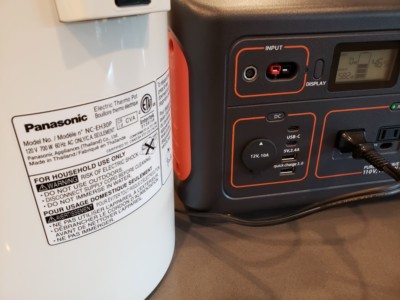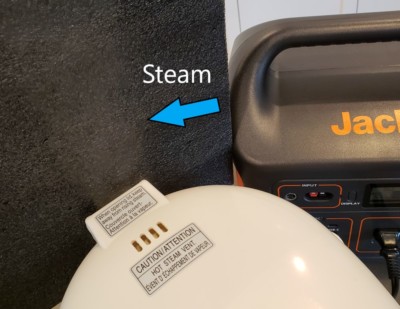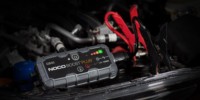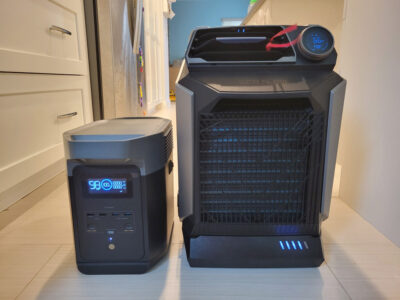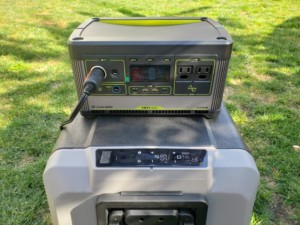Jackery Explorer 1000
Contents
Introduction
With last year’s fires that devastated nearly the entire US west coast, and this year’s COVID-19 disease caused by the coronavirus pandemic, it was time to get a powerhouse generator that could keep a multitude of devices running, including a crucial mini refrigerator that we use to store milk for our infant daughter. Emergency preparation had become a bigger focus within my circle of friends and family, and so I had purchased and reviewed power stations up to 500W for them and myself, each with their unique advantages and disadvantages. All of them were solar charging capable.
The first generator was the Suaoki G500, followed by the Rockpals 500W, and the nrgGo 400. The first two had higher capacity and more fun designs, though I preferred the Rockpals over the Suaoki for its smaller size and built-in LED light bar. The nrgGo took the trophy when it came to safety, high peak wattage, and the backing of a large, US-based energy company. Goal Zero, unfortunately, had been out of my reach because of its much higher price compared to the aforementioned brands, but I took the plunge and will soon review their new, VERY compact Yeti 500x to see why they have been the top power station brand in the US (and perhaps the World).
For now, let’s take a look at the newly-released Jackery Explorer 1000 by one of the — if not THE — best-selling companies on Amazon for that category. The company was supposedly formed by a former Apple battery engineer in 2012, and this latest product is their biggest power station yet. I had previously seen a Honda-branded 290Wh battery at Lowe’s last year that was licensed and made by Jackery, but its small capacity does not interest me for emergency and outdoor use.
Jackery is a combination of “Jacket” and “Battery”. The company used to make Apple jacket batteries.
Why Portable Battery Stations?
I am an avid hiker, camper, and wilderness backpacker and also am one of those guys who has a bug-out bag packaged for emergencies. The ability to bring power with you wherever you go can be both a necessity and comfort. For instance, having a mini fridge to keep your baby’s necessary items cool and to power your medical devices are a must. I am not so much a fan of gas powered generators any more because of their maintenance requirement, noise, and unhealthy exhaust, but if you must have continuous power and have an endless supply of fuel, they are the way to go. But, I prefer the silent, battery-powered ones that could be recharged by the sun and AC outlets.
In A Nutshell
The Jackery Explorer 1000 is an impressively light power station with a professional-looking exterior and flashy, orange color scheme. It packs a LOT of power, uses Tier 1 LG (or BAK Battery) battery cells made by one of the top manufacturers in the World, and is backed by a company that appears, from the stories I have read (and personally experienced), to take customer service seriously. The 1000W of energy (and peak of 2000W) provides enough power for a large amount of electronics and small appliances, such as a laptop, television, mini fridge, medical device (like CPAP), rice cooker, vacuum, water boiler, and circular saw.
The hard, plastic material used to help shed weight (and cost) could be prone to cracking from hard falls or bumps, potentially exposing the Lithium-Ion batteries to puncturing. The fixed carry handle unfortunately cannot be folded, making it not ideal for packing things on top.
Functionally, this is an excellent, portable power station with a multitude of AC and DC outputs, is solar charging capable with MPPT built in, and has a battery management system (BMS) to help ensure safety. Equally important is its verified claim of a pure sine wave — not modified — AC Inverter to produce clean electricity for sensitive electronics. For a power station of this size, its USB-C PD output of 18W falls short of Goal Zero Yeti 500x’s 60W.
Jackery is one of Amazon’s top sellers in the portable power station category with good customer service and reasonable prices, and although this is my first experience with one of their products, I have almost no hesitation to recommend its latest product.
Goal Zero vs Jackery: Yeti 1000 Core vs 1000X vs Explorer 1000
Tip: A battery power station like this one cannot be used to jump start a car. Instead, I suggest getting a small, portable one specifically made for that, such as my favorite: NOCO Genius Boost Car Jump Starter (Lithium Battery).
What’s Good? What’s Bad?
Pros
- Lithium-ion NMC cells are made by LG (a top-notch, Tier 1 battery manufacturer) or by BAK Battery
- My particular unit came with BAK batteries
- Consists of “an array of cylindrical 18650” Li-ion cells
- At 1002 Wh capacity, it nearly matches the Goal Zero Yeti 1000 Lithium’s 1045 Wh
- Capacity to power a 30″ LCD monitor and Mini PC for 10-15 hours, a Toshiba 50″ Fire TV for almost 8.5 hours
- That is roughly equivalent to a 92,778 mAh powerbank at 10.8V or a whopping 278,333 mAh at 3.6V
- Pure Sine Wave AC Inverter capable of continuous 1000W power (and 2000W peak) — See TIPS section
- Very well-priced at $999, especially with a $200 discount given to early bird purchasers in March 2020
- Can power AC and DC (USB/12V Car adapter) at the same time (as long as they draw less than 1000W combined)
- Laptop, tablet, phones, lights, fans, CPAP medical device, projector, TV, mini refrigerator, speaker, camera, DSLR battery charger, and SOME rice cookers
- Can be used while charging
- Informative LCD with LED backlight
- Total power coming in (via solar panel or AC adapter)
- Capacity left (as a percentage)
- Total power (AC and DC combined) being used
- Suaoki G500 displays the Wattage separately for DC and AC, which I prefer
- Unfortunately, estimated hours to full charge or empty is NOT shown
- BMS provides built-in overload, overcharge (automatically stops charging when the device is full), and short-circuit protection
- Multiple fans to keep the station’s temperature safe
- VERY compact at 13.1″ x 9.2″ x 11.1″
- Based on the new Goal Zero Yeti 500x, however, I expect the Yeti 1000x to beat the Explorer 1000 in size
- Surprisingly portable at just 22 lbs for a station of this capacity
- Suaoki G500 (500W) is the same weight
- Goal Zero Yeti 1000 Lithium is 40 lbs
- Bottom is well-protected by bright-orange, non-slip feet
- Carry pouch included to hold AC charger and cables
- Cigarette socket cable included
- Unexpectedly GREAT customer service
- Technical support was excellent in answering all my questions
- 2 year warranty
- Clear, well-written manual, though details were scarce
- Goal Zero’s manual, on the other hand, is VERY detailed and helpful
- Company is based in California
- Optional: Jackery’s official Carry Bag (photos below)
- Bag Pros
- Nicer than expected: reflective interior, durable/soft material (like an insulated lunch bag), and spacious enough to keep the AC adapter and cables inside
- Bag Cons
- Pricey at $55 and has no interior or exterior storage pockets
- Bag Pros
Cons
- Fixed carry handle cannot be stowed away
- Makes it difficult to stow things on top at the back of a trunk
- Upward-curved top (underneath the carry handle) does not allow small items to be temporarily stored on top
- Hard, plastic material makes the power station lighter, but could be prone to cracking from hard falls or bumps
- Given that Lithium-Ion batteries become more volatile as capacity increases, one should handle the product with care
- Although the exterior looks very professional, once I saw the Goal Zero Yeti 500x, I fell in love with the Yeti’s design
- Power buttons can be accidentally turned on/off through a single press (ie. while packing away your camping gear)
- Can lead to accidentally turning on/off the output during transport
- You may unexpectedly find the generator fully drained when you need it
- Both the Explorer 500 and 1000 shut off automatically after 12 hours when less than 10W is drawn (to ensure low-power medical devices, like CPAP, can run overnight)
- Without anything plugged in, the AC inverter still draws 3-7W on its own
- Suaoki requires you to hold the DC or AC button for 2 seconds before it turns on/off that output, helping to minimize accidental presses
- AC power brick is flat, large, and can get uncomfortably warm [Update 6/2020: After Jackery received complaints about this from customers, the company issued a recall and sent a replacement that is smaller and slightly less powerful]
- Built-in flashlight is not as nice as Rockpals 500W’s LED bar
- International distress signal, “SOS”, appears to have a programming error because it rapidly flashes “SO, SO, SO” instead of “SOS, SOS, SOS”
- Delay between “S” and “O” is too short for my liking
- Display is not as informative as I’d like
- Only shows battery charge level, input and output wattage, but no estimate of time remaining to full charge or to empty
- Roughly 20 second delay in having the information updated instead of being in real-time [Update 6/2020: Jackery sent a replacement and data is now shown in real-time]
- USB-C PD port only outputs 18W instead of Goal Zero Yeti 500x’s 60W
- Multiple fans turn on during high peak and can be too noisy for some
- Li-ion NMC batteries have 500 charge cycles before efficiency starts to drop
- Product could, in theory, be charged up to 2,000 cycles — about 1/4 of total capacity is lost every 500 cycle
- Battery cannot be replaced. This can lead to unnecessary landfill waste
- Cannot be daisy-chained to other Jackery Explorer 1000’s to extend battery capacity
- Some Goal Zero stations can be hooked up to other ones so power can be provided for an even longer time without needing to switch
- Not waterproof. Keep it away from water splashes, rain, and pool!
- Lithium and fire or water can cause serious damage or injury!
- Unlike LiFePO4 batteries, NMC can operate only in temperatures between 32-104F (0-40C). Both are Lithium-ion chemistries
- Jackery’s Battery Management System (BMS) prevents:
- Recharging in temps outside of 32-104F
- Outputting power in temps outside of 14-104F
- Jackery’s Battery Management System (BMS) prevents:
- Battery, like all Li-ion, slowly drains over time even when station is powered off
- In theory, the battery takes 1-1.5 years to go from full to empty
- No master power off button to turn off ALL outputs at the same time
- You have to manually switch off each type: DC, AC
- No carry bag for the power station itself is included
Ports
Input
- 1x 8mm
- Max 12-30V and 10A with no minimum wattage
- WARNING: Do NOT use a power source/solar panel that exceeds 30V or 10A!
- Be mindful that solar panels that are daisy chained may output more than 30V combined!
- WARNING: Do NOT use a power source/solar panel that exceeds 30V or 10A!
- Can be used for solar charging
- MPPT charge controller is built in
- Accepts up to 200W
- I recommend using a panel that’s between 30W – 170W at 18V (with the right Amps to equal 170W)
- If you attach a 220W solar panel (with 22V x 10A = 220W), it will charge at only 200W
- Suaoki G500 accepts up to 150W solar panels. Rockpals 500W up to 200W
- Solar charging tests on a bright, cloud-free, California Spring day (Note: Efficiency is always lost during solar conversion)
- Rockpals 80W with Rockpals’ included 8mm-to-MC4 adapter: Excellent @ 43-65W of input
- nrgGo 100W with nrgGo’s optional 8mm-to-MC4 adapter: Excellent @ 71-87W of input
- Jackery SolarSaga 100W with Jackery’s included Anderson-to-8mm cable: Excellent @ 69-88W of input
- Suaoki 160W with nrgGo’s 8mm-to-MC4 adapter: Good @ 101-124W of input
- Do not daisy-chain solar panels in sequence/series as that can add voltage along the way
- Jackery allows 2 of its SolarSaga 100W panels to be connected in parallel, keeping the voltage at a safe level (at or below 30V)
- Max 12-30V and 10A with no minimum wattage
- 1x Anderson for solar charging
Output
- 3x AC with 3 prongs (120V)
- Inverter can handle a continuous 1000W, peaking at a crazy 2000W!
- See the TIPS section below for an explanation of what all this means
- Pure Sine Wave Inverter
- Ensures clean power to protect against damage to sensitive electronics
- Generates less heat
- My hobbyist coworker confirmed that this device generates a Pure Sine Wave. Some manufacturers claim to be this but actually use Modified or Square Waves
- Inverter can handle a continuous 1000W, peaking at a crazy 2000W!
- 1x Cigarette socket (12V, max 10A)
- 2x USB-C (5-12V, max 3A, max PD 18W)
- PD (Power Delivery) allows a device to be charged with up to 18W through the USB-C interface
- 2x USB-A (5V, max 2.4A, max 12W)
- One of them is a QuickCharge 3.0 for rapid charging of compatible devices
Usage
- To turn ON or OFF the Car/USB (DC) or AC outputs, press the corresponding button
- Note: This single-press (without hold) can lead to accidentally turning on or off the power station
- To reset an Error condition that’s shown on the LCD (ie. AC port is Overloaded), turn OFF the respective AC or DC output, and back on
Tips
Continuous vs Peak Output
- The Jackery Explorer 1000’s AC Inverter provides a continuous output of 1,000W with an impressive peak/surge of 2,000W
- AC Inverter: Component responsible for converting battery (DC) power into AC for use by electronics
- Continuous Output: As long as a device (or combination of multiple ones) does not exceed 1000W, it can be used
- Example: A TV that uses 100W can be used because it is less than 1000W. You can add more devices as long as they do not exceed 1000W combined
- Example: A miter saw I have uses 1,800W, and because it exceeds 1,000W, it cannot be used
- Peak/Surge: Almost every device temporarily draws more power when it is turned on. The highest amount it pulls during that time is the Peak/Surge. This Explorer can accept up to a whopping 2,000W!
- Example: A vacuum that uses 900W (continuous) may temporarily suck up 1400W (peak) when powered on. Because 1400W is less than 2,000W (peak), this battery will allow the vacuum to turn on at that level for a few seconds (any longer, and it might cut power as a safety precaution). However, after a few seconds, the vacuum only uses 900W (continuous) while staying on. Because it only draws 900W continuously, which is below the 1000W limit, it can be used until the battery drains
- Example: A miter saw that uses 900W (continuous) and surges to 2300W when powered on would instantly be shut off by the Jackery. Why? Even though the saw uses just 900W while already on, it cannot be used because the power-on surge of 2300W exceeds the 2000W limit
Most devices power on at a higher (Peak) wattage than when they are already on (Continuous). Therefore, if its peak exceeds the power station’s max, it may not be able to start
Calculations – Size & Time
Time to Charge Battery
- Wall charger: 7-8 hours
- AC adapter was observed to provide 160W when charging level was at 51%
- AC adapter will gradually charge slower as battery reaches full capacity (for safety reasons)
- Car charger: 8.5 hrs at 120W
Charge Time with Solar
- Calc: Hours to charge battery = Battery capacity (Wh) / (Panel Wattage x [0.5 or 0.75])
- In a perfect lab environment, solar panels charge at the indicated wattage (ie. 150W)
- Expect to only receive 50-75% on a good, sunny day (ie. 75W – 113W), depending on environmental conditions, panel’s age, and component quality
- 100W solar panel: as fast as 13-16 hours [1002Wh / (100W x 0.75)]
- Tips
- Keep charging even when overcast as the panels will STILL collect energy
- Underproduction: If a 100W panel is not making enough (ie. only 50W) due to bad conditions, adding an extra one can generate a higher, combined output (ie. 50W + 50W from the two panels = 100W total)
- Overproduction: If the panels make more (ie. 200W) than the maximum the power station charge port can take, only the max the power station can take will go through
- WARNING: do NOT connect panels sequentially or you may output too much voltage and fry the power station! Connect them in PARALLEL with a Y-Branch cable
Watts Used/Produced
- Calc: Watts used or produced by device = Voltage x Amperage
- Vacuum with 120V @ 9.5A uses 1,140W
- Solar panel with 12V @ 10A can produce up to 120W
Ideal Battery Size
- Calc: Battery capacity (Wh) = Watts used by device x Hours needed for / 0.85
- 10-15% of power is lost during power conversion
- 45W car fridge needed for 8 hours: Minimum 424Wh power station (45W x 8 / 0.85)
How much energy a battery can store is measured in Wh (Watt-hours), and how much power is used or produced in W (Watts).
Time Before Battery is Empty
- Calc: Hours available for device = Battery capacity (Wh) x 0.85 / Watts used by device
- 10-15% of power is lost during power conversion
- 60W laptop with 1002Wh battery: Up to 14.1 hours (1002Wh x 0.85 / 60W)
Time to Charge Device
- Calc: Hours to charge device = Device’s battery capacity (Wh) / Input Wattage
- 60W laptop with 200Wh battery: Up to 3.4 hrs (200 Wh / 60W)
Conversion to mAh
- Calc: Powerbank-equivalent capacity (mAh) = Battery capacity (Wh) / Voltage x 1000
- 1 Ah = 1000 mAh
- Explorer 1000 @ 3.7V = 270,810 mAh power bank (1002 Wh / 3.7V x 1000) or 92,777 mAh @ 10.8V
Other Tips
- Always make sure you test your devices with the power station before you depend on it
- For example, items that may not work include some rice cookers, 12V DC air pumps, coffee makers, and hair dryers. Use the above formula to calculate the device’s wattage
Keep your 12V DC car cigarette lighter with the power station — you could plug it into the station’s cigarette socket and use it to light things up/start a camp fire
- Lithium-ion batteries are volatile
- To minimize fire damage to your belongings or loved ones, store the power station in the garage and not inside the house. Best storage is a dry, cool place, however
- You cannot bring this battery on a plane
- With the right battery management system, good quality batteries, and other factors, the power station can be stored in the car while camping during a hot, California summer. However, keep the following in mind:
- Keep the battery out of direct sunlight. I usually keep it on the floor of the car and perhaps crack open the windows a tiny bit
- Do not USE the station in the car if temperatures fall below or exceed the battery’s rated, operating temperature (32-104F or 0-40C)
Reset Jackery Explorer: Hold the DISPLAY button for 10 seconds
- Charging with multiple Input ports
- There is an 8mm and Anderson port at the front
- Only one will be allowed to receive power in order to prevent damage to the idle one
- Having both Inputs receive different Voltage levels could have one Input drive power to — and damage — the other
- With the Jackery Explorer 1000, if both the 8mm and Anderson ports are plugged in, only the former remains active
- USB-C port can receive power at the same time as the 8mm ports due to being on a separate charge control circuit
- There is no overload risk for concurrently using it with the 8mm port
- There is an 8mm and Anderson port at the front
- If using a car charger, make SURE you only charge this station while the car is RUNNING. Otherwise, you’ll deplete your car’s battery and leave you stranded
- If charging with the solar panel, be sure to keep the station out of direct sunlight as it could overheat
- You should NOT charge the battery AND use it to power something else at the SAME time as it can damage the battery
- However, I asked the manufacturers for their recommendation on whether THEIR own batteries can be charged and used concurrently:
- Yes, that’s fine
- Jackery Explorer 1000
- Goal Zero Yeti 500x
- Rockpals 500W
- nrgGo 400
- No/Not recommended
- Suaoki G500
- Yes, that’s fine
- However, I asked the manufacturers for their recommendation on whether THEIR own batteries can be charged and used concurrently:
- NEVER charge the power station itself in below freezing temperatures, or you will damage the Lithium-ion battery AND potentially limit its overall capacity
- However, you CAN use the station to power OTHER devices
- The power station has a low temp charging protection (manual does not state so, but confirmed with Jackery support)
- If you have to use the station in below freezing temperatures, keep the power station in an insulated cooler and connected to a power source (ie. solar panels). The heat generated by the battery will keep it running as best as it can
- A solar panel is NOT required to use this power station
- Turn off any output ports (AC/DC) that are not being used in order to conserve power
- Both the Explorer 500 and 1000 shut off automatically after 12 hours when less than 10W is drawn (to ensure low-power medical devices, like CPAP, can run overnight)
- Without anything plugged in, the AC inverter still draws 3-7W on its own
- Do not use this (or any power station) in a tightly enclosed area as the station can overheat
- If charging the station with the car charger, you cannot charge it to 100% capacity with a 12V outlet. If you have a 24V outlet, however, you could
- To prolong the battery lifetime while in storage, keep the station fully charged every 3-6 months
- Or, according to customer support, keep it plugged in when not in use and discharge it to 50% every 3-4 months
- The charging controller automatically gets disabled once the batteries are full
- NOT using the battery for a very long time can actually hurt its lifetime
- There is no “memory effect” in this station’s battery
- Note: It is better to NOT let it completely drain before recharging
- The battery is NOT replaceable. Suaoki’s is not replaceable either, but some Goal Zero’s products are
- Or, according to customer support, keep it plugged in when not in use and discharge it to 50% every 3-4 months
CAUTION: Lithium-ion (LiFePO4 and NMC) batteries do NOT like to remain discharged at 0% for prolonged periods of time. If you let your battery stay at 0% for too long, you may not be able to charge it again without specialized equipment.
Jump Start Car?
A battery power station like this one cannot be used to jump start a car. Instead, I suggest getting a small, portable one specifically made for that, such as my favorite: NOCO Genius Boost Car Jump Starter (Lithium Battery).
Portable Air Conditioner
The EcoFlow Wave is a portable air conditioner that accepts both AC and DC input. The company, of course, recommends using its own Delta power stations for better efficiency and longer runtime because they can draw directly from DC power. In a pinch, any battery or generator capable of providing the Wave-required input wattage could be used, but keep in mind that AC power loses some energy due to conversion to DC.
Goal Zero 12V Car Charger
I wanted to point out how GAME-CHANGING the Goal Zero 12V Car Charger is (Buy on Goal Zero/Amazon). The company inexplicably does not promote its benefits enough, but it can be used to charge batteries at a whopping 120W when the car port supports 10A (like my Toyota Sienna and Highlander did!) All other car chargers I have (Jackery, Rockpals, Paxcess) only go up to 60W, but the Goal Zero can double that! What does that mean? Faster charging while driving around town! I bought two — one for use with the Yeti 1500x and another with the Jackery Explorer 1000.
The Goal Zero 12V Car Charger can charge a supported Goal Zero, Jackery, Bluetti, or EcoFlow battery at a whopping 120W!
Who is Jackery?
According to the company, its name was derived from “Jacket” and “Battery” as a homage to its Apple jacket battery manufacturing roots. The company was founded in 2012 by a former Apple battery engineer and claims to have “launched the [World’s] first… Lithium Portable Power Station” three years later. It had partnered with Honda to brand the Japanese namesake onto a variety of battery products.
Final Thoughts
The Jackery Explorer 1000 is an impressively light power station with a professional-looking exterior and flashy, orange color scheme. It packs a LOT of power, uses Tier 1 LG (or BAK Battery) battery cells made by one of the top manufacturers in the World, and is backed by a company that appears to take customer service seriously. The 1000W of energy (and peak of 2000W) provides enough power for a large amount of electronics and small appliances.
The hard, plastic material commonly used by power stations to help shed weight and cost could be prone to cracking from hard falls or bumps, and as such, this product should be handled with care — a puncture of the Lithium-Ion batteries could cause severe harm. The fixed carry handle unfortunately cannot be folded, making it more difficult to pack things on top.
I wish there was a way to fix the incorrect “SOS” signal of the built-in flashlight as it only blinks “SO” rapidly, and technical support said that a firmware fix would not be possible.
Functionally, this is an excellent, portable power station with a multitude of AC and DC outputs, is solar charging capable with MPPT built in, and has a battery management system (BMS) to help ensure safety. Equally important is its verified claim of a pure sine wave inverter to produce clean electricity for sensitive electronics. For a power station of this size, its USB-C PD output of 18W falls short of Goal Zero Yeti 500x’s 60W.
Jackery is one of Amazon’s top sellers in the portable power station category with good customer service and reasonable prices, and although this is my first experience with one of their products, I have almost no hesitation to recommend its latest product. Look for my review of the Goal Zero Yeti 500x soon!
Goal Zero vs Jackery: Yeti 1000 Core vs 1000X vs Explorer 1000
[Update 6/2020: Jackery had reached out to my friends and I who purchased the initial batch of Explorer 1000’s. In their message, their engineers had found some issues with the AC Inverter and reached out to all affected customers with a free replacement. The new Explorer 1000 has an improved Inverter, fixed the 20-second information delay issue with the Display, replaced the AC adapter with a smaller (but slightly less powerful) one, and includes a Y-Branch adapter for dual solar panel charging. The SOS light pattern, however, is still incorrect.]
Where To Buy
- Jackery Explorer: Battery power stations with solar charging capability
- Jackery SolarSaga: Solar panels
- Other Solar Panels: Rockpals 80W – See our Review / nrgGo 100W / Suaoki 160W
Related Posts
- Power Generators: Gas vs Propane vs Battery Station (and Solar)
- Ultimate Reference: Power Station Comparison
- EcoFlow Wave Air Conditioner
- Reviews
- Goal Zero vs Jackery: Yeti 1000 Core vs 1000X vs Explorer 1000
- Goal Zero Yeti 1500x / Yeti 1000x / Yeti 500x
- Jackery Explorer 2000 Pro / Explorer 300
- EcoFlow Delta Pro LiFePO4
- Bluetti EB70S LiFePO4
- BigBlue Cellpowa500 LiFePO4
- Rockpals 500W / nrgGo 400
- Quick Look
- Announcements
Other Useful Topics
Power Station Comparison
Check it out!
Ultimate Reference: Power Station Comparison – We summarized the specifications of many of the power stations we had come across or reviewed all in one place.
Gas/Propane Generators vs Battery Power Stations
In July 2020, I wrote about this topic after many asked what their differences were. In short, gas/propane generators can run virtually forever but are loud, dirty, and potentially quite dangerous. Battery power stations, on the other hand, are more portable, silent, less volatile, and can be operated indoor, but depend on external power (like solar) to recharge. Where gas/propane are used to GENERATE electricity, batteries STORE them for later use. Personally, I am a fan of the latter because they are so easy to carry around and are safer to use.
Battery Technology and Safety
Goal Zero debuted with Lead-Acid batteries that were bulky and heavy. Today’s devices use Lithium-ion — commonly Nickel Manganese Cobalt (NCM) or Lithium Iron Phosphate (LiFePO4 / LFP) chemistries — for more power in a smaller, lighter package. NMC, however, is more volatile than LiFePO4 and becomes riskier as more cells are packed together. Goal Zero and Jackery used NMC for some time whereas EcoFlow and Bluetti use LiFePO4. Jackery launched its first LiFePO4 model in mid-June 2023 and Goal Zero in October that year.
- How much energy a battery can store is measured in Wh (Watt-hours), and how much power is used or produced in W (Watts)
- The higher the Watt-hour (Wh) capacity rating, the more dangerous the battery could become if not handled right
The quality of the battery cells and the BMS (Battery Management System) are crucial for safety.
Cell Manufacturers
Battery cells made by LG and Sony are among the best in the hobbyist world as are Sanyo/Panasonic and Samsung. Goal Zero uses LG. Jackery also uses LG or BAK (a leading Chinese brand). EcoFlow makes its own. During my years of research, I found that use of lower-quality batteries could pose a serious risk to life and property and should become a crucial part in deciding what to buy.
Safety
The second part in a battery’s safe operation depends heavily on the design and BMS (Battery Management System). Some BMS manufacturers, unfortunately, overstate their capabilities that could lead to catastrophic failure.
- Design should allow for proper, thermal cooling, use quality components, and obtain proper certifications
- Batteries made by known manufacturers are less likely to fail
- BMS should sufficiently restrict the battery from going past its capabilities
Li-ion: LiFePO4 vs NMC
There had been a lot of debate over whether Nickel Manganese Cobalt (NMC) or Lithium Iron Phosphate (LiFePO4) was better. Both are Lithium-ion batteries. Goal Zero, Jackery, and most of today’s power station manufacturers use NMC, but why do EcoFlow and Bluetti use LiFePO4 when they are bulkier and heavier? There are important distinctions, but the best battery is the one that meets all or most of your unique needs.
Charge Cycles
One of the most significant differences — and buying factors — is the charge cycle count for both battery chemistries. It measures how long the battery can be used for before it must be replaced or thrown away. LiFePO4’s count is as high as 4,000 cycles (as of 2023) whereas NMC is 500+. However, both have a useful life that can range between 3,000 – 5,000 cycles (even as much as 7,000 with proper care). But how does the count determine longevity?
Let’s look at Li-ion NMC as an example. It loses about 20-25% of total capacity after every 500 charge cycle. That means after the first 500 cycles, the battery drops 20% from when it was new, then another 20% after the next 500 cycles, and 20% again after that one. It would take roughly 1,500 charging cycles to have the battery last only half as long as when it was brand-new. Thus, it should be usable for 2,000+ cycles or about 6-10 years. Li-ion LiFePO4 can last longer.
CAUTION: Lithium-ion (LiFePO4 and NMC) batteries do NOT like to remain discharged at 0% for prolonged periods of time. If you let your battery stay at 0% for too long, you may not be able to charge it again without specialized equipment. Keep them at between 20-80% while in storage to maximize their lifetime.
LiFePO4 Advantages
- Safer, less volatile, and thus cheaper to manufacture
- Higher charge cycle: 1500-2000 (10+ years). NMC: 500+ (6-10 years)
- Usable in more extreme temperatures (-4F/-20C to 176F/80C). NMC: only 140F/60C max
- Holds 350-day charge. NMC: 300
NMC Advantages
- Smaller and lighter. Allows for more portable products
- Faster charging



